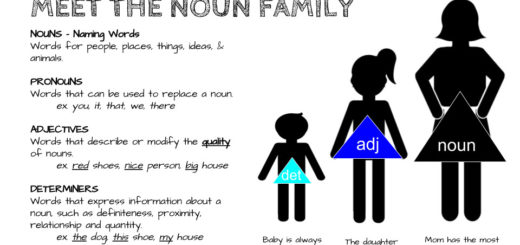Book Review: How to Improve Your Foreign Language Immediately
This is a review and overview of the book: How to Improve Your Foreign Language Immediately by Boris Shekhtman.
As a teacher of Russian to diplomats and journalists, Boris Shekhtman, had to help his students, regardless their level of mastery of Russian, how to stay in a conversation without it being awkward for either the speaker or the listener, how to control the flow of the conversation, how to be understood and how to put your best foot forward and create a positive impression.
As he sees it, most speakers are afraid of making mistakes, so they answer questions abruptly, using the fewest words possible. Then they wait fearfully for the next question. Instead of an equal exchange of ideas, the responsibility for the conversation is put completely in the hands of their native speaking partner. A non-native speaker translates a lot from their native language, so their speech is is not very fluid. They use their hands or use words in their own language as they begin to get frantic. Their partner is confused. There are lots of silent gaps in the conversation. Both of them start to feel very uncomfortable.
This book aims to prevent this kind of situation from happening. It’s not so much about improving your linguistic skills. But it outlines how you can improve your social performance, so that you can enjoy language for it’s primary purpose: communicating and relationship building. The book is not about learning language, but rather about using the language you have as effectively as possible in conversation. He provides some basic strategies and exercises for making you a more effective communicator and conversationalist.
One point he emphasizes is that a speaker doesn’t have to worry about simple vocabulary, grammar or syntactic mistakes. He makes it clear that a mistake is only a mistake when it causes communication to break down. These are communication errors. Other language errors can be corrected over time as the speaker gradually acquires the language.
Here is a quick summary of this seven step approach:
Show your stuff
Simple answers seem abrupt and stop the flow of communication. So he suggests several exercises to simply help you improve your flow.
With the One Minute Exercise you take a topic and force yourself to speak about it for one minute, then at the end of the minute you pass control of the conversation onto another person by asking a question like:
- What’s your opinion about this?
- Do you agree?
- What do you think?
This trains the speaker to survive a fixed period, but just as importantly to relinquish control of the speaking role in s smooth way.
The Do Not Stop Exercise is a group contest. The teacher asks a question and the speaker answers, talking for as long as they can without stopping. The continue until they have nothing more to say or until they experience a communication error (no vocabulary or grammar error). The person that speaks the longest wins. The goal of this exercise is to develop strategies – some that come later in the book – that help prevent a situation where you are simply spurting one word answers and give the control of the conversation to your partner who will start to feel as though they are interrogators as they try to move the conversation forward.
The Develop It Exercise is similar, but the the teacher starts off with the first part of a sentence, like, “Yesterday, I was at a restaurant…” They continue for a set amount of time or until a set number of communication errors are made.
Build Your Islands
Shekhtman says that speaking a foreign language is a little like being thrown into an ocean when you can’t really swim well. You know that you have to keep swimming or you drown. Because you’re inefficient, you work really hard. Eventually you get so tired of working that you start to sink, and in the panic you flounder as you use your last remaining energy.
Because speaking in your non-native language is so difficult, it’s useful to have islands to rest on throughout the conversation. These “islands” are short passages of memorized or text that the speaker is very familiar with. These “speeches” are topics that the speaker has thought about and spoken about often. So they don’t have to think about the vocabulary or grammar. It’s all somewhat automatic and they can relax a little and save their energy for other more difficult parts of the conversation.
You can create well practiced speeches on topics that are important to you or on topics that come up regularly in conversation.
- Your family
- Feelings about weather or the seasons
- What it’s like to live in a foreign country
- The differences between your country and the country you are visiting
- What you like about the country you are in
- Your living situation or home
- Your favorite types of music, movies or books
- Your hobbies and how you discovered them
- A current political situation
- Your work
- A current science topic (ex. AI, self driving cars, etc.)
- Etc.
Now you just don’t spontaneously start talking about these topics. You introduce them when appropriate in the conversation. You introduce these topics when you don’t have the language skills to handle the current topic of conversation, or when there are pauses in the conversation.
You need a bridge to take you from the current topic to your island. Shekhtman has two strategies for this: Linking and baiting.
Linking provides a series of steps to pull the conversation from a topic that you are not familiar with to your island. For example, let’s say someone is talking about their love for helicopters as a kid and how they learned to fly and joined the military.
If you feel that this is not something you can talk about easily, you can shift the conversation. The linking to an island in this case could be something like, “I’ve never sat in a helicopter. I flew in planes – as a passenger. That’s all. You have a lot of courage to do that. I saw a movie with Tom Hanks where the plane stops working and he has to take it in the river in New York. That man was very calm. He had a lot of courage to do that. It is an incredible story. I love movies. I go to the movie theatre each month and watch about two movies each week. American movies are very good. I really like action movies. The last action movie I saw was…”
The baiting technique is useful when conversation has stopped and there is some silence. It involves asking your partner a question that is related to one of your islands. Typically, your partner will answer the question and then ask you a related question. So for example, you could ask a simple question like, “What kind of music do you like?” Your partner will likely talk about their likes and dislikes and then turn the conversation back to you by saying something like, “What about you? What music do you listen to?” This gives you a bridge to your “music island”.
Shifting gears
At times you may find yourself in a situation where you don’t have enough knowledge of the subject or the language to talk about it. You try to express something you are not capable of expressing. You are like a fish on land. Your mouth is opening and closing and nothing is coming out. You wave your hands around, but that doesn’t help either. It can be both funny and embarrassing.
Instead of getting yourself in this situation, you can shift gears and escape a potentially uncomfortable situation. For example, if someone asks you what kind of trees you have in your backyard, you could say something as simple as “Excuse me, but this is difficult to talk about. Let’s talk about something else.” But that is an abrupt transition out of your situation.
A better approach would be to deflect, “What kind of trees do I have? A few different kinds.” or to express some indifference, “I don’t really know. To be honest, I’m not very interested in trees.”
This is the point where you use linking to shift the conversation to an island or a related topic you feel more comfortable with by saying something like, “I prefer to spend my time inside the house. I like to read a lot.” Then shift the conversation back to your partner: “What is your favorite book?”
Or, “I don’t spend time outside at my home. I moved to my house one month ago. I’m fixing up the rooms. I painted my living room and dining room and now I am looking for furniture…” Then you can shift the conversation back to your partner again. “Do you know the best places for buying furniture? Where did you buy furniture for your house?”
The other way to shift is to deflect and question your partner. Keeping with our example of being asked about trees, you could say, “Different kinds. What type of trees to you have in your yard?” Then you can continue to ask your partner questions like, “Do you have any fruit trees? What tree is your favorite tree? Are they big?” This keeps your part in the conversation manageable and at the same time gives you some information and vocabulary that you may be able to use in expanding the conversation or at a later date.
And with this approach you still have the option to shift to an island: “You really like your trees. I don’t know a lot about trees. In my country the plants are very different. I live in the mountains. It’s beautiful. I like to travel to see different things and learn about the country. I’ve been here in your country for one year and I like…”
Simplify, Simplify
Those first few strategies are useful for casual conversation, but there are times when you need to communicate specific information or ideas you can’t change the conversation. In the situation where you find it difficult to express a certain thought or idea, you need to learn strategies to convey your idea as simply as possible.
The problem is that when you want to communicate an idea, you usually think in your own language and then try to translate your idea in a direct way. You have a good mastery of your own language and communicate in a sophisticated way. Unfortunately, you probably don’t have the vocabulary or skills to translate at that high level and it takes a lot of mental energy and time to make that kind of translation.
So you need to stop translating directly and focus on the message. You can use several types of substitutions to do this:
- Use simple words instead of more complicated or nuanced words. You can use a simple word like “give” instead of words you would normally use in your native language like “endow” or “dispense”.
- Use simple sentence structure instead of compound sentence structure. For example, instead of trying to say “We are going to the theatre tonight to see a newly released production as soon as we finish dinner with some old friends I have known for years back in Oklahoma,” you can use simple sentences like, “We are going to have dinner with friends. They are old friends. They lived in Oklahoma when we lived in Oklahoma. After dinner we are going to the theatre. We will see a new play.”
- Use simple grammatical structures instead of complex ones. For example, use an active voice instead of the passive voice. So a sentence like, “The car was driven dangerously by a seemingly distracted driver,” becomes “The driver seemed distracted. He drove the car dangerously.”
We all know our newly learned language at various levels. There is some language that we know well and that we can use in a very automatic way. On the other end of the spectrum, there is language that we can understand passively to a certain extent, but that we have not actually used or reinforced. Then in the middle there is a level of language that we can use, but that is not yet automatic.
Ideally, we want to challenge ourselves and practice using language that we are not completely comfortable with. However, when we are in a situation where we need to have clear communication, it’s best to simplify as much as possible.
Break Away
The next section of the book moves away from it’s theme of communication and turns back to grammar. Basically, Shekhtman says that you need to be aware of how the language structures of your language differ from the language you want to speak and drill those differences specifically. For example, a Russian may say, “I read the book; she is interesting.” This is because nouns are assigned gender in Russian, but that is not a convention of English. His suggestions for drilling for structures is questionable and this is not a useful chapter.
Embellish It
Because there is a strong focus on written language in ESL programs, non-native speakers often speak just like they would write. But native English, or any language, is not just a collection of simple dry neat sentences. It’s more complicated. So Shekhtman outlines a number of devices that we should learn to speak in a more natural, native-like way.
- Exclamations and repetitions: Oh! Right on. Uh huh. Yes, yes. No, no. Absolutely!
- Parenthetical expressions: You know… In my opinion… Of course… Without a doubt… On one hand….
- Parenthetical sentences: ex. “When I went to Paris – I was still in college then – I hardly knew any French.”
- Rhetorical questions: “But who really cares about that?”
- Guidance questions: “I forgot. What did you ask me?”
- Adverbial modifiers of time, place or manner: Yesterday. Later on. Nearby. Far, far away. Perfectly. Loudly.
- Synonymous expressions of nouns, verbs and adjectives: “My boss, the supervisor of my department, is really strict, rigid, mean. He approached me… actually attacked me… verbally.”
- Idiomatic expressions and slang: Stop messing with me. What’s the scoop? Get out! For real?
So conversational English using some of these devices might sound like this:
“I usually get up at 7 every morning. Except for yesterday. My goodness. I forgot to set my alarm and I slept in. But I’ll tell you: That doesn’t happen often. My wife on the other hand. You wouldn’t believe how hard she sleeps… sleeps through anything. A firetruck can’t wake her up. Where was I going with this? Oh yes, about my morning exercise routine! So, I get up at about 7. But I need to take some time to wake up. Can you imagine anyone, rolling out of bed and going straight to the weight room? My friend does that. It’s crazy, isnt’ it? So anyways, after about 30 minutes of puttering around – tidying up, brushing my teeth, stuff like that – I pull out my mat and start to do some simple stretches – for the big muscles – chest, back, legs. Of course, I start of nice and gentle….”
He outlines three exercises or drills to help make these kinds of expressions habitual.
- The first student says a simple sentence and the second student embellishes it. For example, the first student says, “I like pizza.” The second student says, “Oh ya! I like pizza too. No. I love pizza. Who doesn’t like a good pizza? All those delicious things they put on it – mushrooms, cheese, peppers, meat. Oh my goodness! It’s so good.”
- Same exercise, but the second student uses synonyms or alternate ways of saying the same thing. For example the first student may say, “Yesterday, I went to a nearby pizza store and bought a delicious pizza with many toppings. It was delicious.” To which the second student may replies with synonymous phrases, “Just the other day, I walked to a pizza place that is just around the corner from my house. I ate a tasty pizza that had lots of good things on it. I was sooo good.”
- Thirdly, two students engage in a conversation with each student embellishing their thoughts. The first one to speak a bare sentence is eliminated. Example: “I can’t believe it! I met a friend from Spain when I was walking yesterday.” “That’s incredible, amazing. What are the chances that can happen?” “It is unusual for that to happen.” [bare sentence – game ends].
Say What?
The last technique used is simple questioning. You can listen for gist, the main ideas, in the conversation, but if you need clarification you can always just ask. Have a variety of ways of asking a practice them so they become automatic.
- Can you repeat that, please?
- What did you say?
- I didn’t understand what you just said. Can you say it again?
- I’m sorry that my English is not good. Can you speak more slowly for me?
- Can you say that in a different way?
- What is xxx? Is there another word for it?
Or you can restate what you think the meaning is:
- You’re talking about [restate your understanding of what was said], correct?
- You said xxx, didn’t you?
- Let me repeat what you said so I am sure of it.
He suggests a couple exercises for students:
1. First, understand the various types of questions you can ask:
- General: Do you speak other languages?
- Specific: What language do you speak?
- Alternatives: Do you speak Swedish or Norwegian?
- Tags: This is the right scarf, isn’t it?
- Rising intonation: This is the right scarf?
2. Then drill, asking questions about any sentence you hear to become more automatic.
Final thoughts
Because the book focuses on conversation, I think the ideas in the book are valuable, not just for English language learners, but for everyone. The art of conversation seems to be a dying art even with native speakers and so these skills have a broad application.
The focus is on speaking like a native speaker and this is always a controversial subject. If an English language student plans on having contact with native speakers or simply wants to enjoy American cultural experiences, like TV, movies, music, etc., then there is value in learning the very odd idiosyncratic style of spoken American English which is extremely different than written English. To be able to understand or speak like a native takes this kind of specific training. Without this kind of exploration of spoken English, the language learner will always be lost in conversations with natives and will have difficultly making sense of conversations in movies or TV shows.
If you want to have a relationship with a native speaker you need to be able to communicate on their level. And using these approaches helps you put your best foot forward and helps you look your best using the existing language skills and vocabulary that you possess.
On Amazon:













